9 start with V start with V
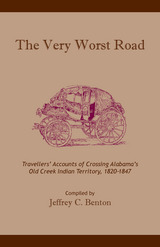
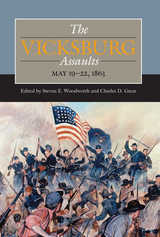
But due to difficult terrain, strong defenses, and uncoordinated movements, the quick triumph Grant desired was unattainable. On the afternoon of May 19, with little rest, preparation, or reconnaissance, Union forces charged the Confederate lines only to be repulsed. A respite between the assaults allowed both sides to reinforce their positions. Early on May 22 the Union artillery sought to soften the stronghold’s defenses before the general attack, but despite the Union forces’ preparation, the fighting proved even more disorganized and vicious. Again Grant failed to move Pemberton. Not wanting to risk more soldiers in a third attack, Grant conceded to the necessity of laying siege. Confederate morale climbed as the Southerners realized they had held their ground against an overwhelming force.
Editors Steven E. Woodworth and Charles D. Grear have assembled five captivating essays that examine Grant’s unsuccessful assaults against Confederate defensive lines around Vicksburg. Ranging from military to social history, the essays further historical debates on prominent topics, such as the reactions of Midwesterners to the first failures of Grant’s Vicksburg campaign. Two essays from opposing sides analyze the controversial decisions surrounding the Railroad Redoubt, the site of the bloodiest fighting on May 22. Another investigates how the tenacity of Texan reinforcements forced Union soldiers to abandon their gains.
Peppered with first-hand observations and bolstered by an impressive depth of research, this anthology is an invitingly written account and comprehensive assessment. By zeroing in on the two assaults, the contributors offer essential clarity and understanding of these important events within the larger scope of the Civil War’s Vicksburg Campaign.
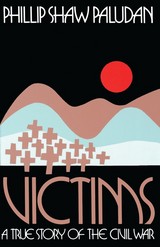
". . . the definitive history of the Shelton Laurel Massacre, but more important it is a pathbreaking study of a principal theater of the guerrilla aspect of the Civil War. Paludan has succeeded admirably in rooting a historically neglected topic in the lives of ordinary people."—Frank L. Byrne, American Historical Review
"The questions Paludan asks about Shelton Laurel in 1863 are appropriate to My Lai in 1968 and Auschwitz in 1944. Victims is not only a good book; it is also an important book. And it is a profoundly disturbing book."—Emory M. Thomas, Georgia Historical Quarterly
"Outwardly a superb analysis of the impact of war and war-time atrocity on the life of a remote mountain community, this slim volume harbors far-reaching implications for the study of class conflict and the modernization process in the Appalachian region."—Ron Eller, Appalachian Journal
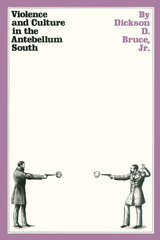
This provocative book draws from a variety of sources—literature, politics, folklore, social history—to attempt to set Southern beliefs about violence in a cultural context. According to Dickson D. Bruce, the control of violence was a central concern of antebellum Southerners.
Using contemporary sources, Bruce describes Southerners’ attitudes as illustrated in their duels, hunting, and the rhetoric of their politicians. He views antebellum Southerners as pessimistic and deeply distrustful of social relationships and demonstrates how this world view impelled their reliance on formal controls to regularize human interaction.
The attitudes toward violence of masters, slaves, and “plain-folk”—the three major social groups of the period—are differentiated, and letters and family papers are used to illustrate how Southern child-rearing practices contributed to attitudes toward violence in the region. The final chapter treats Edgar Allan Poe as a writer who epitomized the attitudes of many Southerners before the Civil War.
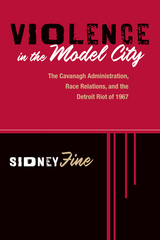
On July 23, 1967, the Detroit police raided a blind pig (after-hours drinking establishment), touching off the most destructive urban riot of the 1960s. It took the U.S. Army, the Michigan National Guard, the Michigan State Police, and the Detroit police department—17,000 men—more than a week to restore order. When all was done, the riot had claimed 43 lives (mostly Black) and resulted in nearly 700 injuries. Over 7,000 individuals were arrested, with property damage estimates over $75 million. Yet, Detroit had been lauded nationally as a "model city" in the governance of a large industrial metropolis. On the 40th anniversary of this nation-changing event, we are pleased to reissue Sidney Fine's seminal work—a detailed study of what happened, why, and with what consequences.

In this annotated volume of primary source documents from Secession Winter, Dwight T. Pitcaithley presents speeches by Virginians from the United States Congress, the Washington Peace Conference which had been called by Virginia’s general assembly, and the state’s secession convention to provide readers a glimpse into Virginia’s ultimate decision to secede from the Union. In his introductory analysis of the trial confronting Virginia’s leadership, Pitcaithley demonstrates that most elected officials wanted Virginia to remain in the Union—but only if Republicans agreed to protect slavery and guarantee its future. While secessionists rightly predicted that the incoming Lincoln administration would refuse to agree to these concessions, Unionists claimed that disunion would ultimately undermine slavery and lead to abolition regardless.
Virginia deliberated longer and proposed more constitutional solutions to avoid secession than any other state. Only after the Confederate bombardment of Fort Sumter and President Lincoln’s request for troops to suppress the “insurrection” did Virginia turn from saving the Union to leaving it.
Throughout Pitcaithley’s collection, one theme remains clear: that slavery and race—not issues over tariffs—were driving Virginia’s debates over secession. Complete with a Secession Winter timeline, extensive bibliography, and questions for discussion, Virginia Secedes: A Documentary History is an invaluable resource for historians and students alike.
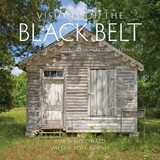
A constellation of Black Belt towns arose during Alabama’s territorial decades, communities like Selma, Camden, Eutaw, Tuskegee, Greenville, and many more. Visions of the Black Belt recounts their stories and others, such as Demopolis’s founding by exiles from Napoleon’s France. As an escarpment of clouds scuds across an indigo sky, the ruins of Alabama’s lost capital of Cahaba reveal the secrets of its lost squares. Also on this picturesque tour are the Black Belt’s homes, from artless cabins wreathed in fern to ozymandian manses wrapped by stately columns, such as Kirkwood and Reverie.
Among the emblematic houses of worship lovingly photographed in Visions of the Black Belt is Prairieville’s St. Andrew’s Episcopal Church, noted for its “carpenter gothic” style. Also reflecting the region’s history of faith are poignant graveyards such as Greenville’s Pioneer Cemetery with its homespun memorials of seashell-and-concrete and the elegant marbles clad in ebon lichen of Selma's Live Oak Cemetery.
In photos and text, McDonald and Burnes bring to life the layers of history that shaped the Black Belt’s tastes, sounds, and colors. Their gastronomic discoveries include the picant crawfish of the Faunsdale Bar & Grill and GainesRidge Dining Club’s famed Black Bottom pie. They bring the sounds of the Black Belt to life by presenting a wide range of musicians and musical events, from bona fide blues and soul masters to Eutaw’s Black Belt Roots Festival.
Including two maps and more than 370 full-color photographs, Visions of the Black Belt offers a timeless message of faith, determination, and the rich simplicity of living in harmony with the rhythms of the land and nature.
Published in Cooperation with the Black Belt Treasures Cultural Arts Center, Camden, Alabama
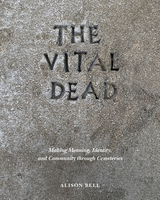
What can a cemetery tell us about the social and cultural dynamics of a place and time? Anthropologist Alison Bell suggests that cemeteries participate in the grassroots cultural work of crafting social connections, even as they test the transcendental durability of the deceased person and provide a measure of a culture’s values. In The Vital Dead, Bell applies this framework to the communities of Virginia’s Shenandoah Valley and the cemeteries that have both claimed them and, paradoxically, sustained them.
Bell surveys objects left on graves, images and epitaphs on grave markers, and other artifacts of material culture to suggest a landscape of symbols maintaining relationships across the threshold of death. She explores cemetery practice and its transformation over time and largely presents her interpretations as a struggle against alienation. Rich in evocative examples both contemporary and historical, Bell’s analysis stems from fieldwork interviews, archival sources, and recent anthropological theory. The book’s chapters range across cemetery types, focusing on African American burials, the grave sites of institutionalized individuals, and modern community memorials. Ultimately, The Vital Dead is an account of how lives, both famous and forgotten, become transformed and energized through the communities and things they leave behind to produce profound and unexpected narratives of mortality. Bell’s deft storytelling coupled with skill for scholarly analysis make for a fascinating and emotionally moving read.
Groundbreaking in its approach, The Vital Dead makes important contributions to cemetery and material culture studies, as well as the fields of anthropology, archaeology, history, geography, and folklore.

A powerful counter-narrative to the current conversation, Voices Worth the Listening presents three real stories of Appalachian people that are unvarnished and more than simply anecdotal. Race, class, drug culture, education, and socioeconomic mobility are all addressed in some way by these narratives. While the themes that emerge in these stories are by no means unique to Appalachia—indeed, they resonate in some ways with the experiences of disadvantaged and marginalized people in other regions of the country—these three women have lived much of their lives outside of the mainstream and their narrated experiences become a meaningful signpost for the people of Appalachia.
READERS
Browse our collection.
PUBLISHERS
See BiblioVault's publisher services.
STUDENT SERVICES
Files for college accessibility offices.
UChicago Accessibility Resources
home | accessibility | search | about | contact us
BiblioVault ® 2001 - 2024
The University of Chicago Press









